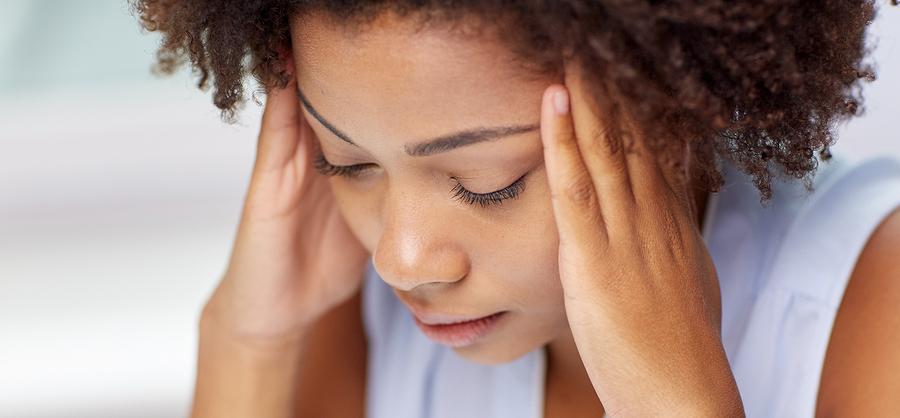We've all experienced a headache at some point in our lives. Headaches are common, categorized by pain, tenderness, or achiness in the head. There are many different types of headaches with various symptoms, severity levels, and treatment options. But is your headache just a passing pain or a sign of a more serious medical condition?
1. Tension Headache
Tension headaches are a common headache often triggered by stress. The pain can vary between individuals, but it's commonly felt all over the body as a dull, aching sensation. Sensitivity or soreness around your neck, forehead, or shoulder muscles may also occur. Most tension headaches can be treated with over-the-counter (OTC) pain relievers to relieve symptoms.
2. Sinus Headaches
Sinus headaches occur when the sinus cavity is inflamed from allergies, illness, or dry weather, says the American Migraine Foundation (AMF). They're associated with a deep and persistent ache in the cheekbones, forehead, or bridge of the nose. The pain often increases with sudden head movements and occurs with other sinus symptoms, like nasal discharge, fever, and facial swelling.
Sinus headaches are treated by thinning out mucus buildup that causes sinus pressure. OTC decongestants and antihistamines and prescription nasal steroid sprays may help relieve symptoms. A sinus headache may be a symptom of a sinus infection, which may require prescription antibiotics to treat the infection and help relieve your headache and other symptoms.
3. Exertion Headaches
Exertion headaches can happen immediately following periods of intense physical activity. Running, weightlifting, and sexual intercourse are common triggers for exertion headaches. These short-lived, throbbing headaches can occur on both sides of your head and are easily treated with OTC analgesics and melatonin.
4. Migraines
For 12 percent of Americans, migraine headaches are incapacitating and can cause severe, debilitating pain that disrupts daily life. Migraines are related to blood vessel contractions and other brain changes, and they're often triggered by environmental or weather changes, stress, or sleep deprivation. They can last as little as 30 minutes or up to several days.
Unlike typical headaches, migraines can cause throbbing pain on one or both sides of the head, dizziness, nausea or vomiting, fatigue, and light, noise, or smell sensitivity. Migraines may be preceded by visual disturbances, such as halos, flashing lights, zigzag lines, or blind spots.
Typically, OTC pain relievers can help with migraine pain. For chronic migraine sufferers, your doctor may prescribe medications that decrease inflammation and change biochemical pathways.
5. Hormone Headaches
Many women frequently experience headaches linked to hormonal fluctuations. Menstruation, pregnancy, menopause, and hormonal contraceptives affect estrogen levels, causing headaches. It's estimated that about 60 percent of women with migraines also encounter menstrual migraines — headaches associated with any part of the menstrual cycle, says the Cleveland Clinic.
OTC pain relievers, along with relaxation techniques, yoga, acupuncture, and diet modification, may help decrease or prevent hormone headaches.
6. Cluster Headache
According to the AMF, cluster headache is a rare headache disorder that consists of severe burning or piercing pain around, or behind, one eye or side of the face, often with facial swelling, flushing, sweating, nasal congestion, drooping eyelids, and eye tearing that occurs on the same side as the headache.
Three times more common in men than women, people suffering these types of headaches experience severe pain lasting between 15 and 180 minutes, occurring up to eight times a day for four to six weeks.
A cluster headache can be treated with acute and preventive drug treatment like oxygen therapy, steroid injections, oral steroids (commonly prednisone), and melatonin.
7. Hypertension Headaches
A hypertension headache occurs when your blood pressure becomes critically high — over 180/110. These headaches often have a pulsating quality on both sides of your head and are accompanied by vision changes, chest pain, shortness of breath, or nosebleeds. If you believe you're experiencing a hypertension headache, seek immediate medical attention. A hypertension headache can be treated by lowering your blood pressure.
When you have a pounding headache, it's easy to worry. Rest assured, many types of headaches are episodic and will go away within a day. However, contact your doctor if you have a headache lasting more than two days, increasing in intensity, or occurring on a regular basis.




